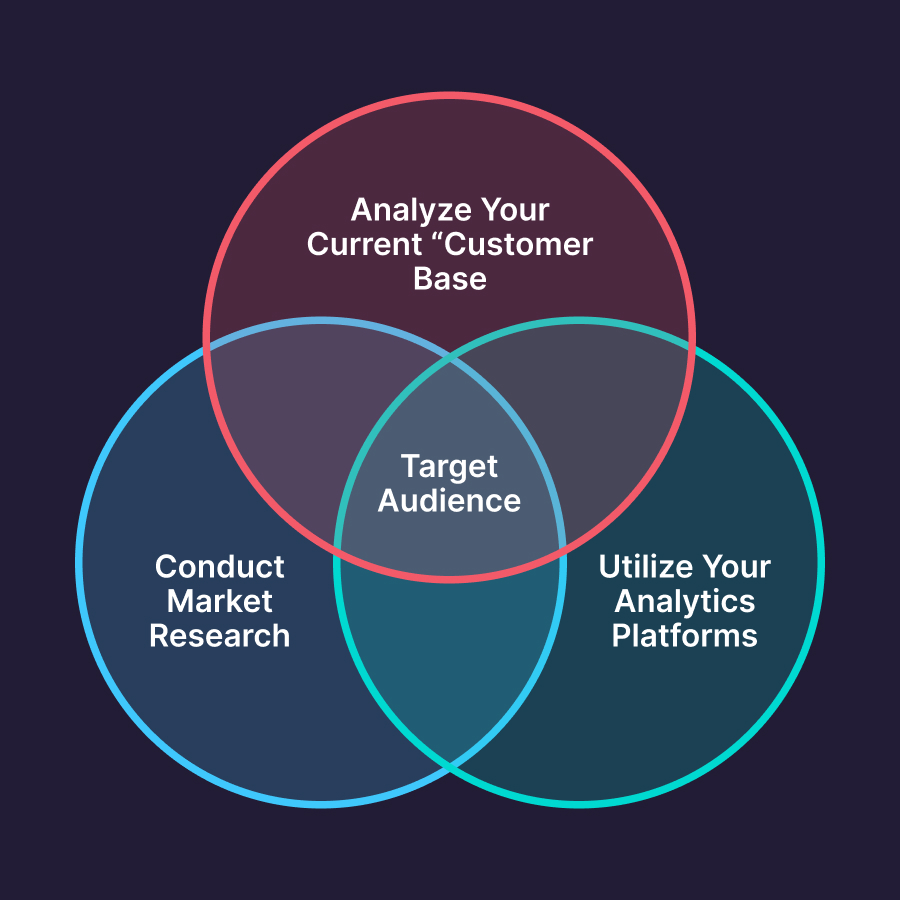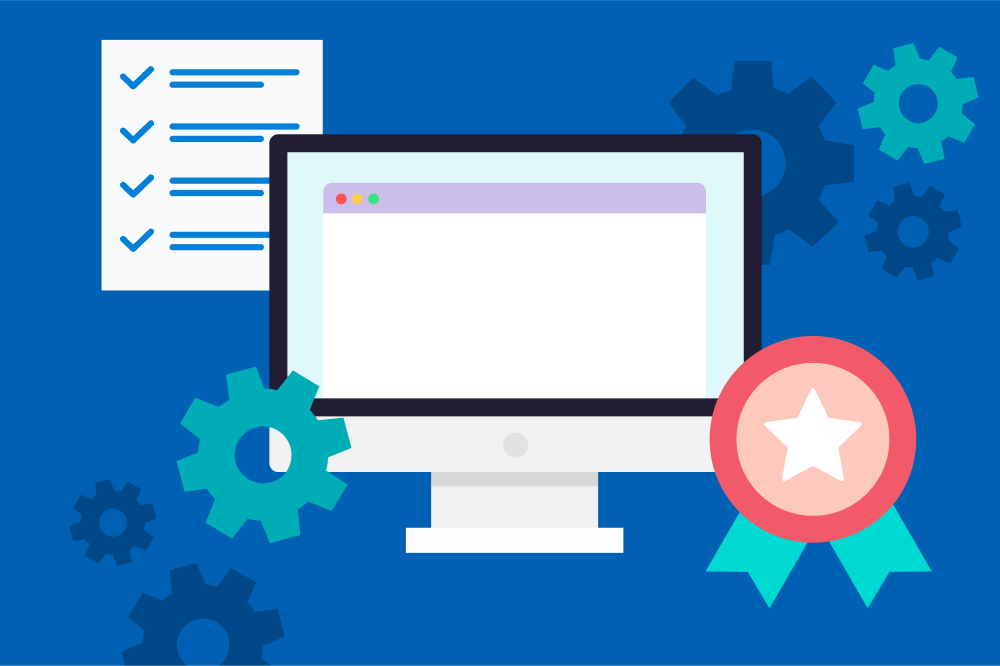Investing in a custom software solution can substantially improve your business processes and maximize engagement with your target audience. By automating complex or manual tasks, you can promote growth and gain an advantage over competitors.
However, many businesses do not possess the necessary internal know-how to develop these specialized solutions. They often benefit from partnering with an external development agency skilled in matching software requirements with business objectives. Given the plethora of agencies available, selecting the right one can be challenging. To aid in this crucial decision-making process, we've compiled a detailed guide to help you evaluate your business requirements, ensuring you and your team are well-prepared before reaching out to an agency.
Determine Your Target Audience
Before you can determine what your custom software solution will be, you need first to identify who your target audience is. Your target audience will be the users who will benefit most from your custom application and how you can maximize your impact. Understanding your audience will dictate how your custom application will operate and what functionalities will be required.
How to Find Your Target Audience
Listed below are a few different methods to find your target audience.
Analyze Your Current “Customer Base”
Defining your target audience begins with analyzing your current customer base. Customers are divided into two categories - internal and external. Internal “customers” are those with a relationship with your company, such as employees or partners. External customers are the persons who pay for and use the products or services your company offers. As a business, it is up to you to decide which category your customers fall into because this will determine the foundation of your custom application.
In some cases, you may experience an overlap of internal and external customers, which will lead you to find a balance in how you serve these two audiences and what role your custom application will serve in managing them.
Once you have figured out which bucket your customers fall into (internal, external, or a mix of both), you can start categorizing them based on their demographics, purchase behaviors, lifestyle, or common interests.
One way you can learn about your current audience is to send out a survey to learn more about their experience with your brand and how you could make a positive impact by implementing custom software.
Conduct Market Research
Market research is a sure-fire way to determine what your competitors have been up to. You can analyze industry trends to see if there is already a similar custom software solution on the market or if there’s a gap that you can fill with your product's unique value.
Providing a custom solution that no one else offers gives you the competitive advantage to either retain employees by improving their experience at work or attracting new customers.
Utilize Your Analytics Platforms
You can use many different platforms to collect customer data with the internal tools that your business uses or with external tools like Google Analytics.
A few examples of internal tools you can use to collect data are systems like time tracking, user logins, and feedback tools to understand patterns and needs.
On the other hand, Google Analytics is able to analyze the users that visit your site so that you can make data-driven decisions about your custom software solution.
Ultimately, by establishing who your target audience is, you can figure out who isn’t. The primary focus of your custom software solution is to benefit the consumers who intend to purchase your products or services.

Recognizing Pain Points
Business pain points are specific problems your current or prospective customers are experiencing on the buyer's journey. Failing to locate the pain points in your business can result in lost profits, failure to keep employees, or prevent you from attracting new customers.
Different Types of Pain Points
To identify your organization's pain points, you'll need to understand how they can manifest.
Productivity Pain Points: When you fail to have an efficient, streamlined customer or user experience. For example, employees might find it frustrating to do their job if they have to use multiple systems to complete simple tasks, or external customers are less likely to purchase your products if you have a redundant, cumbersome checkout process.
Support Pain Points: This occurs when your customers aren't receiving the help from you that they need as they move along the buyer's journey.
Process Pain Points: When users go through multiple processes to find the information they need or the purchasing process is unclear.
How to Identify Your Pain Points
The best and most effective way to find your business's pain points is to conduct qualitative research. Through user interviews, focus groups, and questionnaires, you'll directly capture invaluable consumer insights, highlighting areas within your business that require improvement.
Prioritizing Your Pain Points
Most of the time, your business will have multiple pain points to address. Collaborate with your team to devise a scale, helping you pinpoint and prioritize the most pressing issues based on their severity.
This example from Findologic shows what a typical scale may look like:
- Critical: If we do not fix this, users cannot complete the desired action.
- Serious: Many users will be frustrated if we do not remedy this issue and may give up.
- High: There are barriers to a user achieving their goal.
- Moderate: Impacts core journey and users experience reduced performance.
- Minor: Users are annoyed, but this does not keep them from completing the scenario and can be revisited later.

Defining Your Custom Software Solution
Now that you have defined your target audience and have identified your pain points, here are the steps you can take to start brainstorming your ideal custom software solution.
Step 1: Research your competitors - Find out what custom technologies your competitors are using and if they are fulfilling the needs of their customers. If not, determine how you can fill in those gaps.
Step 2: Determine the technology solutions your company is already using. This will help you figure out the databases in your business that you will need to pull information from and what systems you will need to connect your custom software solution to.
Step 3: Talk with your team to see if custom technology is still an effective solution to help you reach your target audience and manage business pain points. Although this seems like a counter-intuitive step, there could be a chance that custom software might not be the best solution for your business.
Available Resources
After you’ve taken the proper steps to outline your software solution, you need to consider your available internal resources. When assessing your internal resources, some things to consider are:
- Who on your team possesses the knowledge to explain the technical elements of your existing system in an easily digestible way? This information will help a potential agency understand the landscape they will be working off of and provide them with a point of contact.
- Is there anyone on your team with technical expertise? For example, some companies may have a team of developers but may lack the skillset to build a custom application. However, they may be able to take on some of the workload.
- The last thing to consider is - who will be a part of maintaining your desired custom solution after it's built? Do you currently have anyone on your team who can maintain it, or will you need to work out a support contract with an agency partner?
Budget and Timeline
Once your research is complete and you clearly understand your application’s functionality and the audience you want to reach, you can set your desired budget and timeline.
Budget
While custom application software is one of the best long-term solutions for your business, it can have a hefty upfront price tag. When requesting to spend a large sum of money, you must take the proper steps to identify the necessary stakeholders with a say in the final budget and how you will receive their buy-in. To ensure you win them over, you should provide documentation on how this investment will positively impact the bottom line and show how your custom tool has the potential to change the lives of your customers. While something might sound great in theory, you need to have some form of proof to solidify your pitch.
If you can only acquire a portion of your requested budget, you need to determine the “must-haves” vs. the “live without” features of your custom application software. The hard truth is that while there might be desirable features, there are times when the budget won’t match. Having something that's functional and accessible is more valuable than something that 'looks pretty.'
Timeline
When creating the timeline for taking the custom software application to live, there is a delicate balance between a desirable and realistic timeline. However, if there is a high demand to get this custom software solution on the market as soon as possible, it will be crucial to find an agency with the skills to do so.

There are many reasons to define your needs BEFORE reaching out to a development agency, but the most important is that it can save you time and money. This is because you aren’t putting your business at risk by investing in a solution that doesn’t meet your needs, and you aren’t wasting your time interviewing agencies that aren’t a good fit.
You’ll know when you’ve found the right agency when they show that they thoroughly understand your business goals and are willing to collaborate with you to develop a solution, rather than pushing a solution on you that they think is best.







